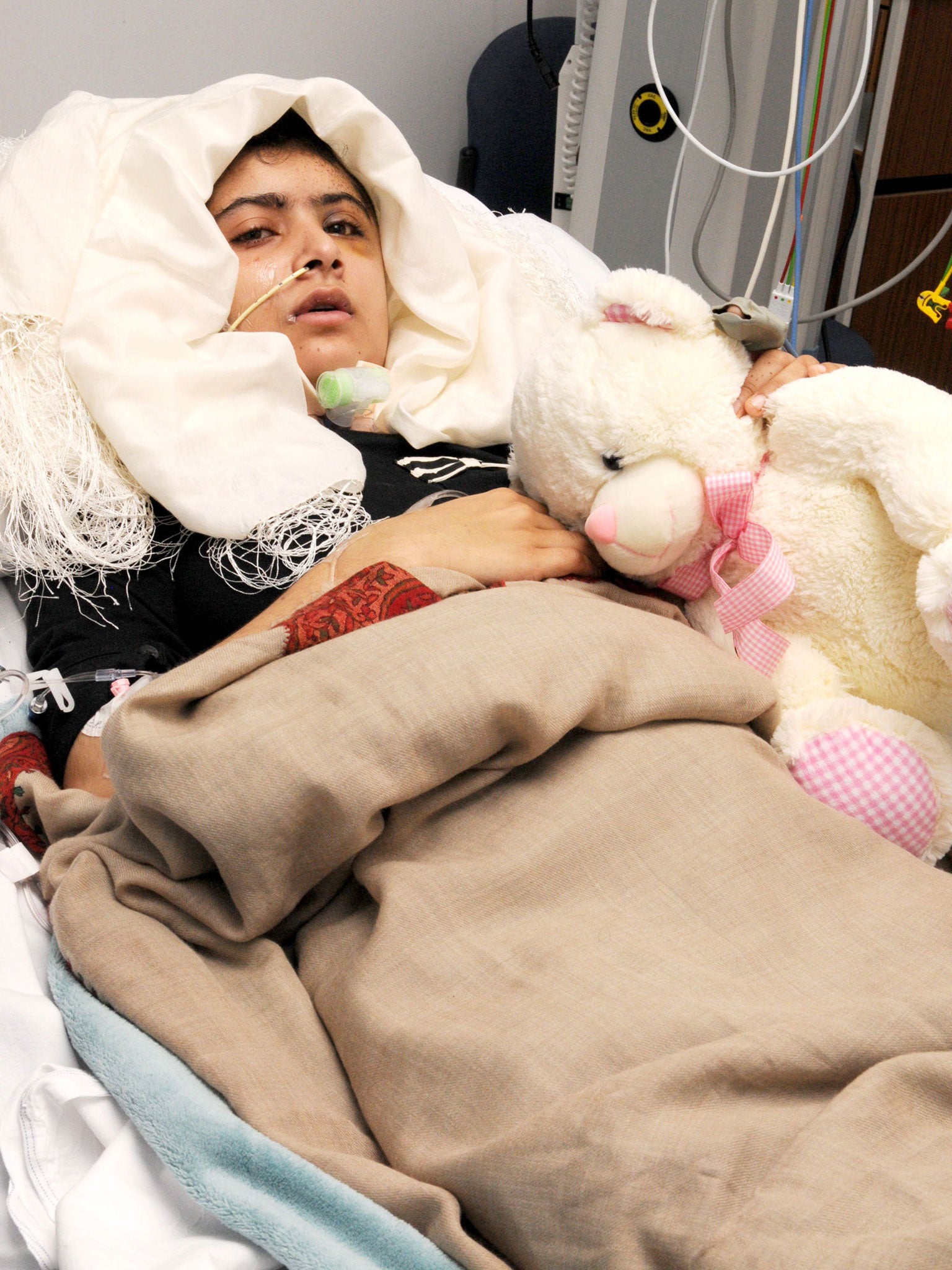The New Suffragettes: Taking on the Taliban
All Malala Yousafzai wanted was education, for herself and other girls. For that, she was sought out and gunned down. Now she is a global icon

Her name translates as “grief-stricken”, but she has become an international symbol of hope. Still only 15 years old, Malala Yousafzai is a softly spoken teenage activist who has given a voice to countless women and girls – and successfully challenged the power of the Taliban. Not even an attempted assassination last year could soften her resolve to “make a difference” to the lives of those on whose behalf she relentlessly campaigns.
Named after a Pashtun poet and warrior woman, Malala is still a schoolgirl but has proved both fierce and fearless in her defiance of the forces of oppression.
In October, she narrowly escaped death. She was shot in the head and neck after daring to speak up for the rights of girls to an education in her homeland of Pakistan. Somehow she survived and returned to school two months ago at an independent girls’ school in Birmingham. She remains a tireless advocate of women’s rights.
The Taliban continues to reiterate its resolve to kill both her and her father, Ziauddin Yousafzai, a poet, school-owner and educational activist. But Malala has stayed true to her words: “All I want is education. And I’m afraid of no one.”
It is this attitude of fearless defiance that first drove Malala to prominence at the age of 11, blogging for the BBC about her daily life under a regime of extremism.
In 2007, Malala’s home district of Swat fell under Taliban rule, led by Maulana Fazlullah. Under sharia law, it forbade the education of girls – littering bombs over schools by way of enforcement – as well as prohibiting television, singing and dancing.
An intensive military drive followed in 2009, officially restoring government control of the region. But the situation never fully stabilised.
The Swat region, a once-picturesque valley which stands near the Pakistan-Afghanistan border, was once renowned as one of the most free and creative places in Pakistan. Today it is riddled with violence and intimidation.
The writings of young Malala, in which she describes hiding her books under her clothes, house searches, and her recurring nightmares during the Second Battle of Swat, have shone a light on the reality of the daily battle girls face under Taliban rule.
A Sunni Muslim who was raised by her parents in the city of Mingora, along with two younger brothers and two pet chickens, Malala was largely educated by her father, who ran a chain of schools known as the Khushal Public School. He would allow his daughter to stay up late to discuss politics after her brothers had been sent to bed. He has described Malala, his eldest child, as “the daughter of the whole world”.
In 2009, a 25-year-old dancer called Shabana was executed for breaking the Taliban’s ban on dancing. Malala began to give interviews to international media while many of her contemporaries in this impoverished area were either too scared to speak out or unable to do so with the same clarity – voicing her message on-camera: “They cannot stop me. I will get my education if it is my home, school or any place. This is our request to all the world. Save our schools. Save our world. Save our Pakistan. Save our Swat.”
The following year, Malala, then aged 11, was signed up by BBC Urdu to write her diary.
On 3 January 2009, her first entry was posted under the pseudonym Gul Makai, meaning “corn flower” in Urdu. She recorded experiences such as the absence of family picnics and evening walks as the tensions heightened, and the time her head teacher warned pupils not to wear their uniform to class, for fear of drawing attention to them.
“I decided to wear my favourite pink dress. Other girls in school were wearing colourful dresses and the school presented a homely look,” she wrote.
Malala, who likes to play computer games and named her favourite TV show as Raja Ki Aayegi Baraat (My Dream Boy Will Come to Marry Me), was on her way home from school on the morning of 9 October last year, when she was shot in the head and neck by a man. The Taliban later claimed responsibility.
She spent several days unconscious in Pakistan before being flown to Britain, where she underwent numerous bouts of surgery – including two operations to repair her shattered skull and hearing.
Since then, she has not only made a remarkably successful journey to recovery but has stepped up her pursuit of the right of every girl to education. Earlier this month, she launched the Malala Fund: a £30,000 grant for education in the Swat Valley which will benefit 40 girls in Pakistan.
That was two months after she returned to her studies, at the £10,000-a-year Edgbaston High School in Birmingham. She said she missed her classmates in Swat but felt hopeful for the future: “I am excited that today I have achieved my dream of going back to school. I want all girls in the world to have this basic opportunity.”
The youngest-ever nominee for the Nobel Peace Prize, Malala also had a UN petition launched in her honour – “I am Malala” – to demand universal girls’ education across the world. She has spoken of her ambitions to work as a doctor or politician in the future. For now, however, her greatest objective is to inspire: “If one girl can make a difference, then every one of you can make a difference.
Join our commenting forum
Join thought-provoking conversations, follow other Independent readers and see their replies
Comments